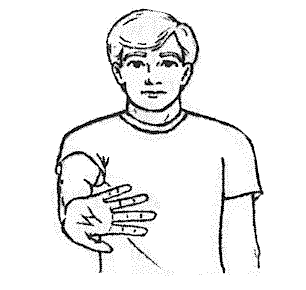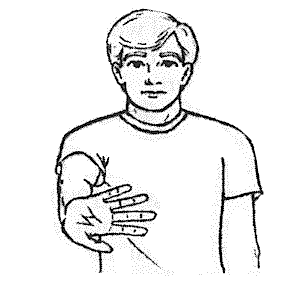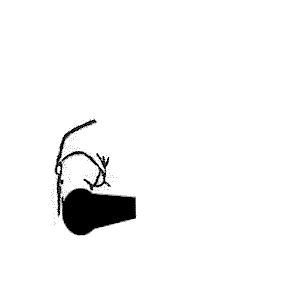



Experiment#1: Short Interval Experiment#2 Long Interval
Images from Shiffrar, M., and Freyd, J.J. (1990) Apparent Motion of the Human Body.
In the image on the left, the interval between the two frames is very fast, and thus the brain solves the correspondence problem by choosing the shortest path, even though this is biologically impossible. When however, there is sufficient time for the brain to process the information, it chooses the biologically feasible solution, even though it is a longer path, (as in the figure on the right).

My modified Experiment
I did not feel that the first experiment conclusively proved that our visual
system takes advantage of real world physical properties, the results could
just be from the fact that there is more time to solve the correspondence in
the second case. So, I decided to eliminate the 'influences' of the real world.
To do this, I removed the person's body and head, and replaced their hand with
a simple geometric shape. This essentially eliminated any real world cues that
would otherwise prevent one from seeing the shorter path. When I viewed this
new scenario at the slower speed, I only saw the shorter path, (I could not
see the longer path as with the person). There was nothing I could do to convince
myself that the motion could be along the longer path. The combination of these
two experiments convinced me that when solving correspondence problems, we do
take into consideration real world physical cues.